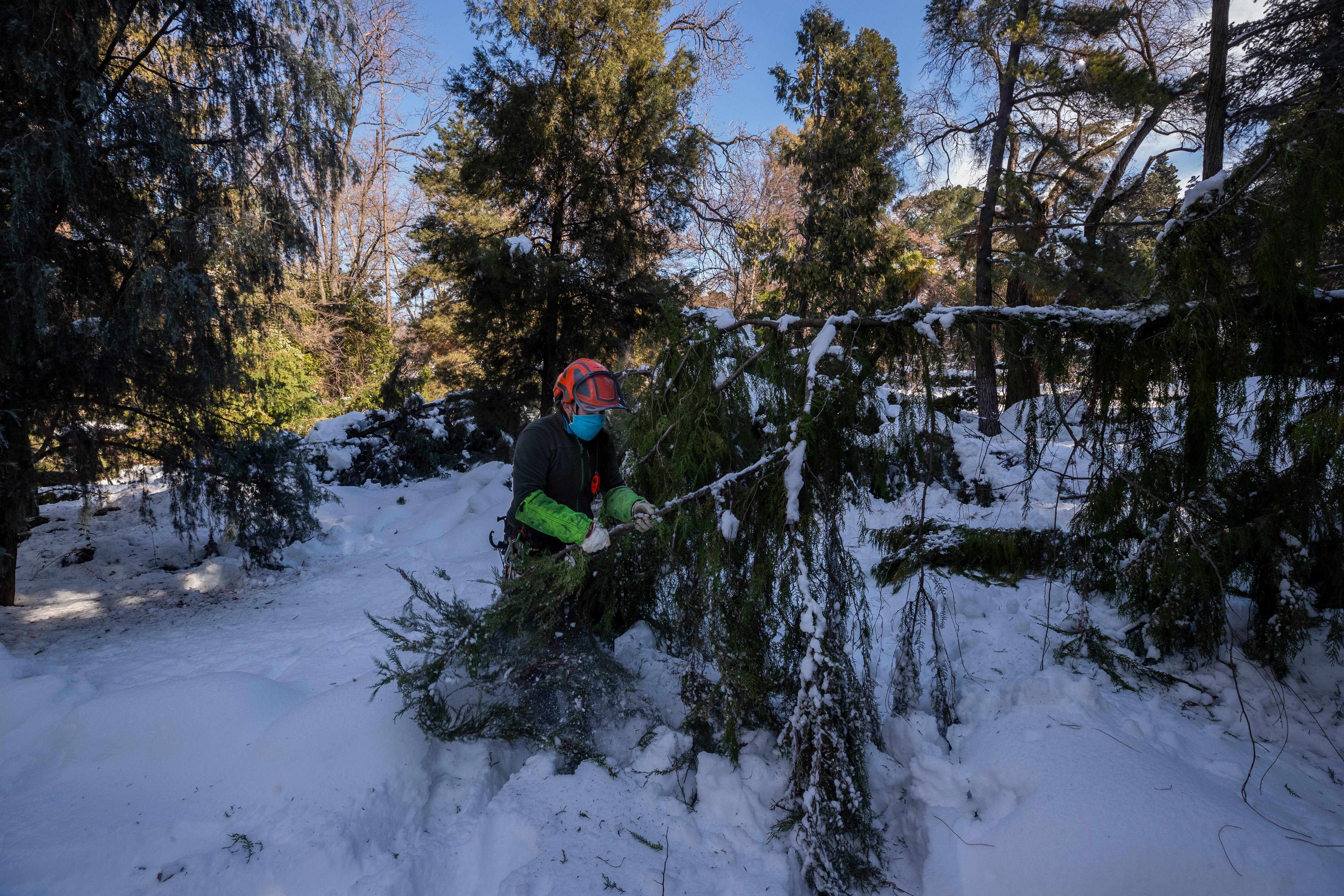Madrid digs way out of post-storm garbage, damaged trees
The capital of Spain has started grappling with garbage piled in the streets and tens of thousands of trees and branches blocking the pavement less than a week after Storm Filomena

Your support helps us to tell the story
From reproductive rights to climate change to Big Tech, The Independent is on the ground when the story is developing. Whether it's investigating the financials of Elon Musk's pro-Trump PAC or producing our latest documentary, 'The A Word', which shines a light on the American women fighting for reproductive rights, we know how important it is to parse out the facts from the messaging.
At such a critical moment in US history, we need reporters on the ground. Your donation allows us to keep sending journalists to speak to both sides of the story.
The Independent is trusted by Americans across the entire political spectrum. And unlike many other quality news outlets, we choose not to lock Americans out of our reporting and analysis with paywalls. We believe quality journalism should be available to everyone, paid for by those who can afford it.
Your support makes all the difference.With piles of ice and snow still covering most streets of Madrid the Spanish capital began Thursday grappling with the problem of garbage piled in the streets and tens of thousands of trees and branches blocking the pavement less than a week after Storm Filomena.
The Madrid city government estimated on Thursday that Filomena caused at least 1.4 billion euros ($1.7 billion) in damage.
Mayor José Luis Martínez-Almeida said the storm had damaged 150,000 trees. Major parks, including Retiro Park in the heart of the city and the huge Casa de Campo Park on Madrid's western outskirts, suffered.
Martínez-Almeida said the city calculated that 1,250 metric tons of snow (1,378 U.S. tons) fell nonstop for 30 hours during the peak of the storm Friday and Saturday, adding that it was Madrid’s heaviest snowfall in a century.
Fortunately, the Royal Botanic Gardens, ne of the oldest botanical gardens in Europe, survived almost unscathed.
Garden conservationist Mariano Sánchez said just 36 of its many thousand trees suffered damage. While most species in the collection survived intact, laboratory work would have to be done to save two special trees that were badly damaged, one a Chilean pepper tree from the 18th century.
Sánchez said it was sad to see years of work almost dashed in hours but that he was glad “the damage was not too excessive" in the garden.
He blamed much of the storm damage to the Madrid's trees on systematic annual pruning, a process he said robbed urban trees of their strength.
“This is absurd and needs to stop,” Sánchez told The Associated Press. The policy of planting too many trees too close together does not help, he said.
Meanwhile, with garbage trucks unable to make collections during first few days after the storm, trash piled up throughout the city, overflowing public and household bins.
The mayor said garbage collections were back at full operation but it is likely to take several days for Madrid to regain its normal appearance.
Martínez-Almeida said the “snow tsunami” that hit Madrid justified his call for the national government to declare the city a catastrophe zone to make it eligible for financial help to repair building and infrastructure damage.